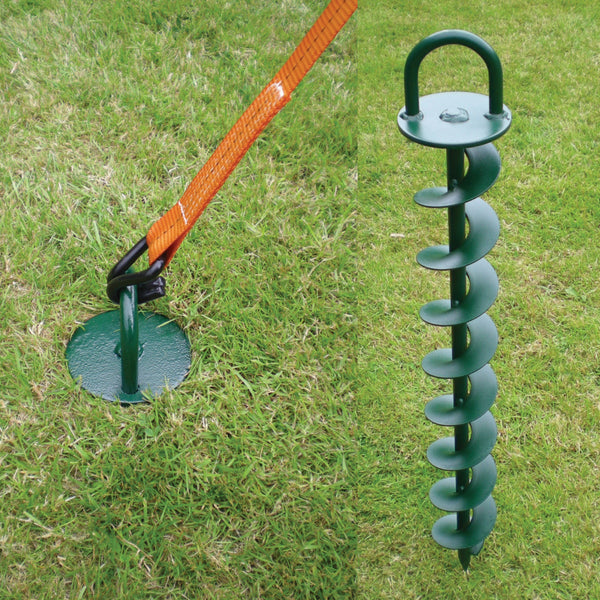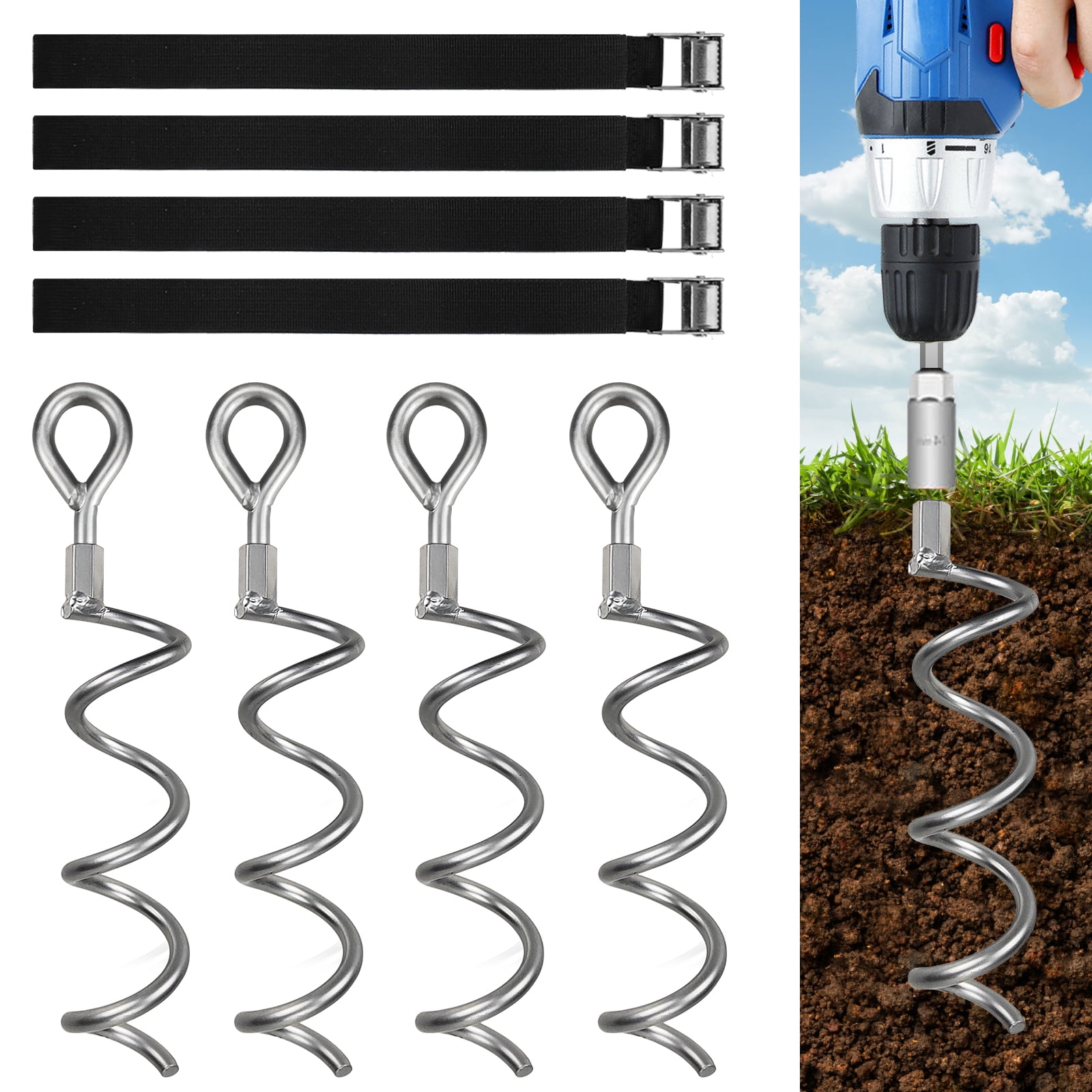Reasons to Choose a High-Quality Ground Anchor for Safety
Reasons to Choose a High-Quality Ground Anchor for Safety
Blog Article
Explore the Different Types of Ground Anchor for Your Next Job
From auger supports, which excel in varied dirt problems, to risk anchors made for momentary setups, the options are many. Furthermore, concrete and screw supports present one-of-a-kind advantages in certain circumstances, while deadman anchors are customized for applications needing resistance to side forces.

Auger Anchors
Auger anchors are a popular option in numerous building and landscape design jobs as a result of their special design and reliable securing capabilities. These supports consist of a helical screw-like shaft that is driven right into the ground, permitting a steady and safe and secure hold. The spiral layout promotes very easy installment and optimizes resistance versus side pressures, making auger anchors particularly effective in applications such as fencing, temporary frameworks, and erosion control.
The installation procedure of auger supports is fairly simple. They can be manually or mechanically set up, relying on the size and required deepness. This adaptability allows for their usage in diverse dirt problems, from sandy to clayey terrains. In addition, auger supports can be easily removed and reused, which contributes to their cost-effectiveness and sustainability.
One of the significant advantages of auger supports is their capability to distribute tons uniformly across the bordering dirt, minimizing the danger of dirt disturbance and lessening ecological effect. Additionally, they are less prone to loosening up or heaving gradually compared to typical anchoring techniques. Auger supports are a superb choice for jobs needing dependable and long lasting anchoring remedies.

Stake Anchors
When it involves securing structures in a variety of outside applications, risk anchors use a reliable and straightforward service. These anchors are typically built from long lasting products such as steel or light weight aluminum, made to hold up against ecological anxieties while supplying optimum security. Their easy layout allows for quick installment, making them a perfect selection for temporary or long-term anchoring requirements.
Stake anchors are particularly useful in safeguarding camping tents, covers, and other lightweight structures versus wind and weather condition. They work by being driven right into the ground at an angle, creating a solid hold that stands up to pull-out forces - Ground Anchor. The effectiveness of stake supports depends upon a number of variables, consisting of soil type, dampness material, and the angle of setup
For added security, many risk anchors feature accessory factors for bands or ropes, permitting tension adjustments as necessary. In applications such as landscape design or building and construction, they can effectively support devices or frameworks on unequal terrain. On the whole, stake anchors give a flexible and cost-efficient option for protecting various exterior installments, making them a favored choice for contractors and do it yourself enthusiasts alike.
Concrete Anchors
Concrete supports give a durable service for protecting frameworks to concrete surfaces, ensuring security and security in different applications. These supports are important for projects ranging from property building and constructions to massive commercial installments. They can be found in various kinds, including growth supports, sticky anchors, and undercut anchors, each developed for particular load requirements and environmental conditions.
Adhesive anchors utilize high-strength epoxy or material to bond the anchor to the concrete, supplying remarkable load-bearing abilities, especially in broken concrete situations. Undercut supports create an one-of-a-kind form within the concrete, giving outstanding holding power, specifically in applications where tensile lots are widespread.
Selecting the suitable concrete anchor involves considering aspects such as the weight of the lots, the problem of the concrete, and environmental problems. Appropriate installment methods are crucial to make sure optimal efficiency and integrity. When executed appropriately, concrete anchors considerably enhance the architectural stability of different projects, making them crucial in contemporary construction methods. Comprehending the particular requirements of your job will aid in choosing the appropriate type of concrete support for the job.
Screw Anchors

Screw anchors are a functional fastening option that can be successfully employed in a variety of applications where standard concrete supports may not suffice. These supports are composed of a helical design that enables them to be easily driven right into the ground, making them perfect for use in dirt and other substrates. Their special structure offers outstanding holding power and resistance to pull-out forces, useful link making them ideal for many jobs, from landscape design to architectural assistance.
Among the primary benefits of screw supports is their simplicity of setup. They require marginal devices and can typically be installed without the requirement for excavation, which saves both time and labor expenses. In addition, screw anchors can be gotten rid of and recycled, offering a lasting option for short-lived applications.
Screw supports are specifically valuable in locations where soil conditions are testing, such as sandy or loose soils. Their capacity click here to find out more to be installed at differing depths allows for modification based on certain job requirements. Overall, screw supports give a reputable and reliable securing approach, making them an outstanding choice for specialists and engineers seeking effective options for their jobs.
Deadman Anchors
Deadman supports function as a robust remedy for maintaining structures in challenging problems, especially where traditional anchoring methods may drop brief. These supports contain large, heavy objects buried underground, which create resistance versus side forces. The design normally includes a horizontal component, such as a block of concrete or a steel plate, buried in the dirt, to which straps or cords are affixed.
The performance of deadman supports hinges on their capability to distribute lots over a larger location, lowering the threat of failing in unsteady dirt conditions. They are especially advantageous in applications such as preserving wall surfaces, temporary frameworks, and incline stabilization, where soil activity can jeopardize the stability of the structure.
Installation of deadman anchors requires cautious preparation to guarantee they are placed at the proper depth and alignment, optimizing their load-bearing ability. While they may need even more labor and material than lightweight supports, their dependability in negative conditions makes them indispensable for lasting projects. Deadman supports are functional and can be adjusted to numerous applications, making them a best selection for designers facing special difficulties in their projects.
Conclusion
Auger supports stand out in diverse dirt conditions, while risk anchors suit temporary applications. For concrete surface areas, development and glue supports supply trusted choices, and screw supports offer adaptability in tough surfaces.
Additionally, concrete and screw anchors existing unique advantages in particular situations, while deadman supports are tailored for applications requiring resistance to side pressures - Ground Anchor.Auger anchors are a prominent selection in various building and landscaping tasks due to their distinct style and effective anchoring capacities. They come in various types, consisting of expansion anchors, adhesive supports, and undercut anchors, each designed for specific lots needs and ecological problems
Sticky supports use high-strength epoxy or resin to bond the anchor to Visit This Link the concrete, offering premium load-bearing capacities, particularly in broken concrete situations. On the whole, screw supports offer a reputable and reliable anchoring approach, making them a superb option for designers and contractors seeking reliable solutions for their jobs.
Report this page